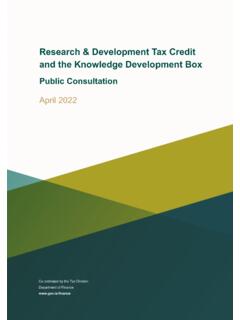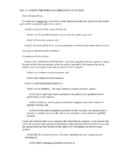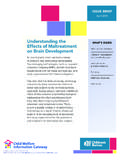Transcription of Factors Affecting Non-Performing Loans: Case Study on ...
1 International Journal of Scientific and research Publications, Volume 6, Issue 5, May 2016 656 ISSN 2250-3153 Factors Affecting Non-Performing Loans: Case Study on development Bank of Ethiopia Central Region Arega Seyoum Asfaw*, Hanna Nigussie Bogale**, Tadele Tesfay Teame* * College of Business and Economics, Jimma University, Jimma Ethiopia ** development Bank of Ethiopia, Central Region, Addis Ababa, Ethiopia Abstract- The Study aims at identifying the major Factors Affecting Non-Performing loans of development Bank of Ethiopia, Central Region. To achieve this objective descriptive research design was used and data has been collected mainly through primary source using questionnaire from both borrowers and region s staffs. Secondary data were also used by reviewing the annual reports, bulletins, manuals, directives and procedures issued by the bank.
2 43 borrowers and 24 staffs were taken as samples from 77 default loans (Nonperforming loans) and 31 region s staffs respectively based on stratified random sampling method of sample selection by using mathematical formula. For data analysis, descriptive statistics including mean, frequency and percentages were used and processed through computer loaded SPSS software. The result of the Study shows that poor credit assessment and credit monitoring are the major causes for the occurrence of NPL in DBE. Credit size (includes aggressive lending, compromised integrity in approval, rapid credit growth and bank s great risk appetite); high interest rate, poorly negotiated credit terms and lenient/lax credit terms, and elongated process of loan approval were bank specific causes for the occurrence of nonperforming loans.
3 On the other hand, poor credit culture of customers, lack of knowledge of borrower for the business they engaged in, willful default, loan diversion, and project management problems were identified as the major customer specific causes of NPLs. Hence, to reduce the occurrence of loan default it is suggests that the Bank should strengthen its applicant screening criteria and due diligence assessment to select potential risk taking applicants and adopt appropriate pre and post credit risk assessments. Besides, the bank needs to make sure that borrowed funds are being used for the intended purpose through enhanced credit monitoring. Index Terms- Bank Specific Factors , Customer Specific Factors , Nonperforming Loan. I. INTRODUCTION ending is one of the main activities of a bank and interest income makes up the lion share of profit.
4 In the case of the DBE, lending to manufacturing, agro-processing industries, mining or extractive industries and commercial agricultural projects constitute the major sources of its income. As a strategic government owned institution, DBE is uniquely positioned in the financial industry as it is empowered to extend both development finance and short-term working capital loans as a package (DBE s Loan Manual, 2014). The development bank of Ethiopia (DBE) is one of government owned financial institutions engaged in providing short, medium and long term development credits by financing viable projects from the priority areas of the government. DBE s distinguished feature is its project based lending tradition. Project financed by the Bank are carefully selected and prepared through appraisal, closely supervised and systematically evaluated.
5 It mobilizes funds from domestic and foreign sources. To achieve the objectives of circulating more and more financial resources to meet the increasing demand for credit and to keep the Bank in sound financial position, the loans extended to various sectors of the economy must be recovered in full. Both the principal which is used for re-lending as well as the interest to meet the operating costs must be recovered. However, for the last many years the Bank s loan repayment performance has been very low due to various Factors . These Factors may explain among others the loan repayment behavior of borrowers and lending behavior of the Bank. This has an impact on the sustainable provision of credit to the potential investors and existence of the bank as a financial institution (DBE Annual Report, 2014).
6 Knowing these Factors will assist the Bank in its continuous efforts to recover its existing loans and to set ideals for forthcoming ones. Therefore, loan recovery is considered as a crucial factor Affecting the liquidity and profitability of the bank. Thus, the present Study attempts to identify the determinants of loan repayment performance of projects financed by development Bank of Ethiopia Central region. The researchers strongly believe that identifying the Factors Affecting loan repayment performance of projects would enable the bank s management to tackle and minimize the problems and consequently will enhance its loan recovery performance. Statement of the Problem Credit has long been recognized as one of the important tool that supports the success of development project which contributes towards economic development .
7 Similarly DBE provides sustainable credit facility for those engaged in agriculture, industrial and other service sectors which can result in development of the country. So, in order to maintain this objective the bank needs to strengthen its liquidity position by enhancing its loan recovery. However, provision of credit alone does not support the economic development of the country unless it is accompanied by the existence of Factors necessary for efficient utilization of the fund in order to repay the loan in accordance with the agreement. Based on strategic objective of the government, term loan projects financed by the bank has long L International Journal of Scientific and research Publications, Volume 6, Issue 5, May 2016 657 ISSN 2250-3153 loan repayment period which extends up to twenty years including maximum five years of grace period.
8 Moreover, low interest rate than commercial banks, which is for priority area projects and is for non-priority area projects, and suitable rehabilitation mechanism makes the bank different from other lending institutions (DBE Loan Manual, 2014). The sustainability of the bank depends not only on domestic and foreign source of fund but also on its loan recovery rate too. The loan repayment performance of its clients should be effective so that the bank will be sustainable as a bank and will have a bankable asset quality. One of the measurements by which bank s asset quality can be measured is the nonperforming loan ratio (NPLs ratio). Hence, in order to get soft loan from its lenders, DBE s asset quality has to be regularly monitored and assessed whether it is within the acceptable standard or not that is 15% of the total outstanding loan which is set by Association of African development Finance Institutions.
9 Accordingly, when looking at the asset quality of DBE Central region, the average NPLs ratio for the last five years covering from 2009/2010 up to 2013/2014 was 45%. This clearly indicates that there is a problem in loan repayment as it is highly deviated from the accepted standard 15% of the total outstanding loan (DBE Annual Report, 2009/10 to 2013/14). The increasing level of Non-Performing loans may lead to very serious implications. For instance, it discourages the financial institution to refinance the defaulting client, which put the defaulters once again into vicious circle of low productivity. Therefore, a rough investigation of the various aspects of loan defaults, source of credit, purpose of the loan, form of the loan, and condition of loan provision are of utmost importance both for policy makers and the lending institutions.
10 Even if default is random and influenced by unpredictable behaviors or it is influenced by certain Factors in a specific situation needs an empirical investigation so that the findings can be used by any financial institutions to manipulate their credit program for the better. Most of the default arose from poor management procedures, loan diversion and unwillingness to repay loans, etc. Because of this, the lenders must give various institutional methods that aimed to reduce the risk of loan default (Ahmmed et al., 2012). Consequently, to reduce the default rate and to enhance the sustainability of the bank, it is imperative that identifying the various Factors which significantly affect the loan repayment performance from both borrowers and lender side.

















